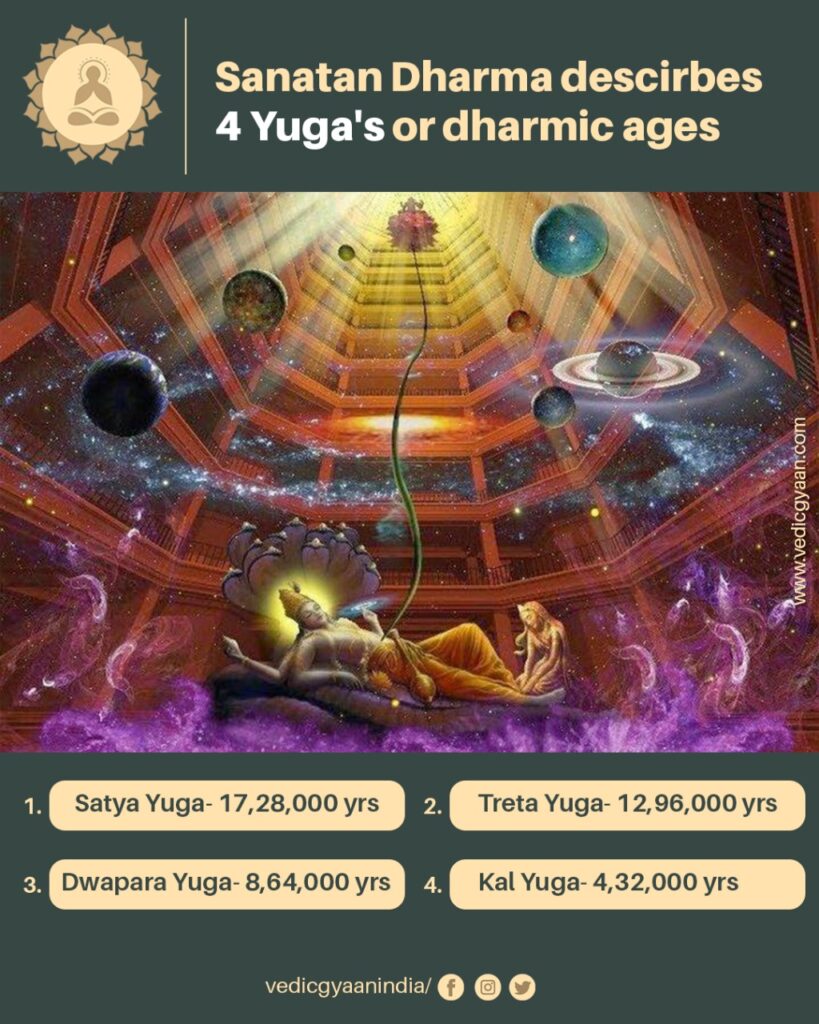The Srimad Bhagavatam Puran offers a unique perspective on the world’s geography. It describes our planet, the Vasumatī, which comprises seven continents, or “Sapta dvipa.” It provides a fascinating glimpse into ancient geographical knowledge. As per Canto 4, verse 11 of Srimad Bhagavatam, Maharaja Prithu once ruled the entire world in the Satya Yuga.

Story of Maharaja Prithu
In Satya Yuga, there was a period when plague and famine hit the Earth. All the devas became tense and frightened. To solve the problem, they went to Bhagwan Vishnu, who suggested they awaken Prithu, a descendant of Maharishi Vivasvan. When awakened, Prithu was compassionate for the sufferings of people living on the Earth. Then, he took responsibility for caring for the Earth by eradicating famine and plague, determined to care for every living creature.
Prithu’s reign marked his exceptional skill in managing the Earth’s resources and fostering its prosperity. He organized the land into various regions, established social structures, and encouraged the growth of agriculture and trade. His rule was so fair and balanced that the Earth came to be known as Prithvi, signifying “the land of Prithu.”
Saptadvipa: The Seven Continents of the World
Saptadvīpa Vasumatī concept refering to Srimad Bhagavatam (Canto 5, Chapter 16)
1. Jambu dvipa: The Land of Jambu Trees
Jambudvīpa, literally translated to “land of the Jambu tree,” is believed to be the continent of Asia. The text describes it as shaped like a lotus flower with Mount Sumeru (possibly representing the Himalayas) at its centre.
2. Salmali dvipa: The Land of Śālmali Trees
Śālmali-dvīpa refers to the continent said to be south of Jambudvīpa, often interpreted as Africa. The scripture describes it as the shape of a giant Śālmali tree (the silk-cotton tree).
3. Kusa dvipa: The Land of Kuśa Grass
Kuśadvipa, meaning “land of Kuśa grass,” is believed to be located west of Jambudvīpa, possibly corresponding to Europe. The text describes it as triangular and covered in this sacred grass.
4. Kraunca dvipa: The Land of the Kraunch (Crane) Bird
Krauncadvīpa, or “land of the Kraunch bird,” is said to be north of Jambudvīpa, potentially representing North America. The scripture describes it as shaped like a crane with a pleasant climate.
5. Saka dvipa: The Land of the Śakas
Śākadvīpa refers to the continent east of Jambudvīpa, possibly corresponding to Southeast Asia and Oceania. The text describes it as inhabited by the Śakas, a people mentioned in ancient Indian texts.
6. Plakṣa dvipa: The Land of the Plakṣa Tree
Plakṣadvipa, literally meaning “land of the Plakṣa tree” (the Indian fig tree), is said to be located south of Krauncadvīpa, potentially representing South America. The scripture describes it as shaped like this tree and rich in medicinal plants.
7. Puskaradvipa: The Land of the Lotus Flower
Puskaradvipa, or “land of the lotus flower,” is believed to be a continent located beneath Jambudvīpa, possibly representing Antarctica or a legendary continent. The text describes it as a perfect lotus flower shape and a realm of bliss.
The Saptadvīpa Vasumatī concept not only describes the geographical layout of the Earth but also holds spiritual significance. Each continent has its unique characteristics and inhabitants, reflecting the diversity of human existence.



